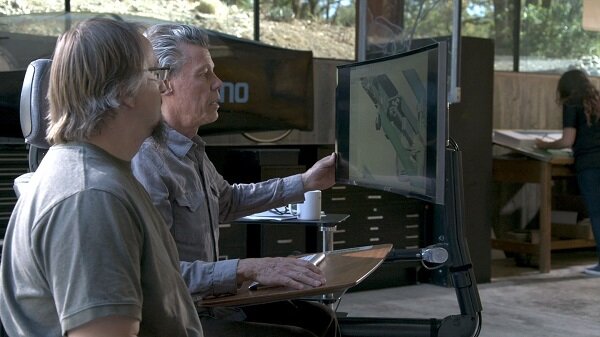As an office design company, our inboxes are constantly being filled with “breaking news” about newly innovative solutions to modern office furniture. And recently we’ve been hearing more and more about a task chair and workstation designed by an American startup called Altwork.
It’s been six years in the making and is an ergonomic solution that is completely customisable, converting from a standing desk to a more traditional sitting desk to a reclined position. While this all sounds great on paper, does it really work?

Admittedly, the photos do seem to show a chair that is the prime example of comfort and we can certainly imagine watching Netflix from the Altwork Station, but is it really a feasible way to work? Take a seat or stand at your desk as we explore the thought process behind the Altwork Station…
The science of comfort

Modern ergonomics emerged as a result of World War II, when workers’ comfort first became notably important to employers, as comfort in both factories and in the cockpit could save lives.
However, the task chair as we know it only became an object of high design in the late 1970s when William Stumpf created the Ergon chair for Herman Miller. This was the first time that businesses were introduced to the concept of the dedicated office task chair with a moulded foam back support.

Of course, the workplace has evolved since then and we now live very much in what would have been perceived back then as the office of the future.
Computers are now an integral part of the workplace and so task chairs have adapted. Today, employees spend a lot of time at their desks typing away. Yet, as research has shown that sitting down all day is bad for your health, the task chair’s role has evolved once more to bring us the alternative of standing desks.
The Altwork Station presents itself as the next logical step, combining all the seating and standing trends into one easily adjustable device.

The Altwork Station was actually inspired by the company’s co-founder, John Speicher. After he had been injured in a car accident, he could only work comfortably while in a reclined position.
After plenty of research and months of testing, Speicher and co-founder and CEO, Che Voigt, created the prototype of a medical-looking workstation. However, whilst it was inspired by an injured worker, the workstation isn’t designed to be exclusively used by people who are injured or disabled. Altwork believes that it’s the perfect work station for anyone whose main professional tool is the computer.
The chair you never have to leave

The Altwork station has been big news across the pond in America, with a lot of people trialling the workstation and sharing their thoughts. It’s become known as “the chair you never have to leave”, and we can certainly see why.
However, this idea in itself throws up numerous issues and questions about workplace wellbeing and productivity. Whilst comfort is a key element of workplace wellbeing, it’s also important that employees are leaving their workstations.
Chance encounters in the office are hugely beneficial in order for workers to collaborate and communicate with one and other. Simply referring to the Altwork Station as “the chair that you never have to leave”, seems to undermine these vital day-to-day experiences and office encounters.

On the website, Altwork does specify that the desk is meant to encourage movement, which has been proven to increase comfort while working.
However, people have commented about how they eventually just end up sitting in a similar position to normal when the novelty has worn off. While this is probably due to force-of-habit, other users have suggested that it stems from not being able to find a comfortable reclining position that they could work in for more than an hour. Others commented that they felt embarrassed to be stretched out in such a vulnerable position with their coworkers sitting next to them!
In a nutshell, the Altwork Station is certainly interesting, and it’s definitely raising important questions about workplace ergonomics and comfort, but we’re still not sure if it’s right for communal workplaces. Although we’re certainly open to testing one out!








